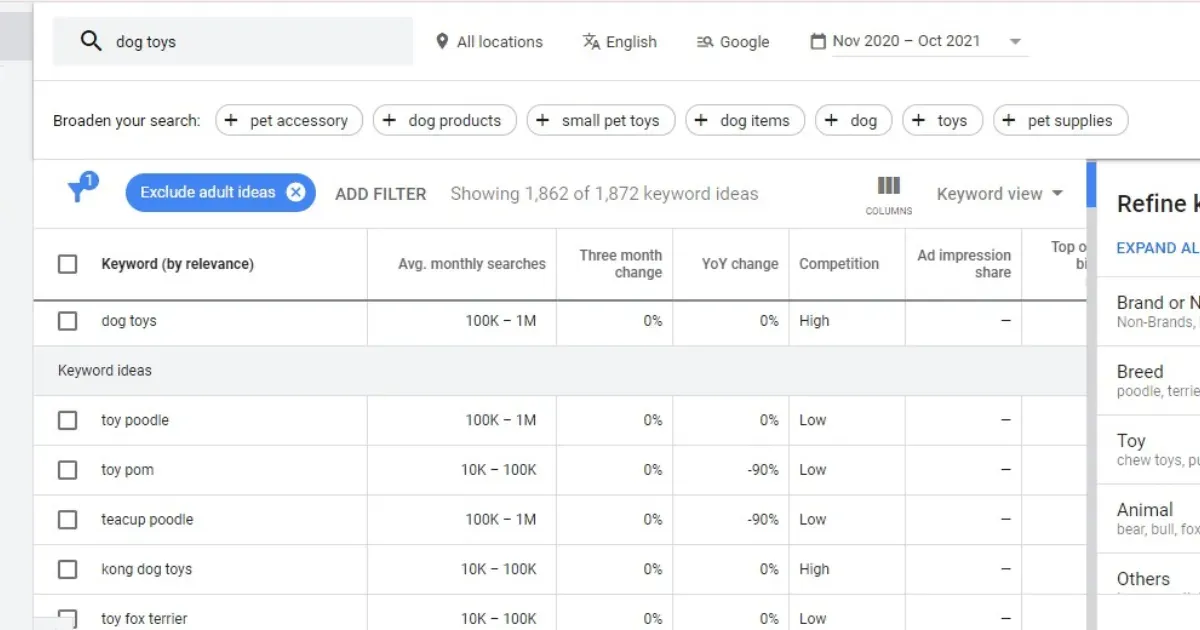Essential SEO Tips for Shopify: Increase Online Store Traffic
In the competitive world of e-commerce, having a stunning Shopify store is just the beginning. To ensure your products reach potential customers, it’s essential to optimize your store for search engines. SEO (Search Engine Optimization) is the key to improving your store’s visibility on Google, driving organic traffic, and ultimately boosting sales. In this article, we’ll explore essential SEO tips for Shopify that can help you climb the ranks and achieve online success.
Shopify SEO: What Is It?
In simple terms, Shopify SEO focuses on optimizing Shopify for search engines.
Shopify SEO is similar to regular search engine optimization on WordPress, with a few unique aspects to consider.
When it comes to boosting the visibility of your store products on Google, it's crucial to pay close attention to incorporating relevant keywords into your product descriptions and image alt texts.
Furthermore, it is important to refrain from cluttering your website with redundant information. One issue that sets Shopify apart from WordPress is the presence of duplicate content.
Now, we will explore several SEO tips for Shopify that can be employed to enhance the ranking of your Shopify store on Google.
SEO Tips for Shopify to Boost Google Ranking
Do Research on Keywords
Your SEO campaign's success or failure depends heavily on the keywords you select. It is unfortunate that a significant number of eCommerce entrepreneurs do not prioritize keyword research.
Simply scattering keywords throughout your website won't work. In SEO tips for Shopify, the most important aspect is utilizing the appropriate terms.
Discovering the optimal blend of keywords for your SEO strategy can be a difficult task. It requires careful analysis and research to identify the most effective keywords that will enhance your website's visibility and attract the right audience. SEO tips for Shopify store are: Straightforward. Perform keyword research.
First, it would be helpful to narrow your focus a little. Choosing a broad niche such as "sneakers" is not sufficient. A more focused niche tends to yield better results. CBD products designed for pets can be effective.
After determining your preferred niche, the subsequent step involves identifying the appropriate keywords related to it.
There are multiple approaches to tackle this task. An option is to utilize the auto-suggest feature provided by Google or Amazon. Identifying the keywords that your customers are searching for can greatly enhance their visibility in search results.
Imagine you are in the business of selling toys specifically designed for pets. Visit Google and enter the search term "dog toys". It is evident that the following keywords will appear.
When searching for your store or products, potential customers will utilize these specific search queries. If you want to go beyond the basics, you have the option to utilize specialized SEO tools to conduct more extensive keyword research.
Shopify's Top Keyword Tools
The auto-suggest features provided by Google and Amazon are indeed impressive, although their capabilities are somewhat restricted. For instance, they do not provide information on the search volume and keyword difficulties associated with these search queries.
However, in SEO tips for Shopify, specialized tools such as Google Keyword Planner and Ahref are capable of performing this task. In addition, an expanded list of related keywords can be generated.
As an illustration, if you input one of the recommended keywords, such as "dog toys," into Google Keyword Planner, the following information will be displayed:

It is important to carefully consider the monthly search volume and level of competition. It is advisable to prioritize keywords that have a high monthly search volume and relatively low competition. In addition, utilizing SEO extensions for Chrome can greatly enhance the effectiveness of your SEO endeavors.
Include the Keywords in the Content of Your Page
By now, you should have identified the keywords that you want to focus on. Ensuring that your pages are easily discoverable by Google crawlers is an important next step in SEO tips for Shopify.
Prior to proceeding, it is essential to identify the specific pages where the keywords will be incorporated. Begin with your homepage, product pages, and product category pages as they provide a solid foundation.
For optimal placement of the keywords, it is important to identify the specific locations on the pages where they should be added. Page title, meta description, page body content, and image Alt texts are all excellent locations to optimize for maximum effectiveness.
As an example, suppose you wish to include the term "women sweatpant" in your product page title. Based on the information provided, it seems that your website is in its early stages and does not currently have a product page. You will need to include one and incorporate your chosen term into it.
Read more: Best SEO Apps for Shopify to Boost Your Optimization Efforts
Boost Shopify SEO by Improving Navigation to Your Website
Google considers the ease of navigation as one of the metrics when determining the ranking of a website in SEO tips for Shopify. Websites that are easy to navigate tend to have higher user engagement and lower bounce rates. This is because users find it easier to navigate through the site, resulting in a more positive user experience.
In other words, a well-organized navigation structure on your website can lead to longer user engagement and a notable boost in your Shopify store's ranking.
Optimizing your navigation structure can begin with your homepage. First and foremost, it is important to ensure that your product pages are easily accessible from your homepage.
It is recommended that visitors have a streamlined browsing experience and can easily find a specific product within three clicks. Here is an exemplary structure:
Home > Product Category > Product
Now let's focus on optimizing your website menu.
When adding items to your menu, it is important to use text that accurately reflects the title of the page it is linking to.
As an illustration, when you include "Contact us" in your navigation menu, it is important to ensure that the corresponding page is titled "Contact us" as well.
Furthermore, it is important to ensure that the anchor texts used for internal page links accurately describe the content of the pages they lead to.
Consider a scenario where you have recently published a blog post and would like to include a hyperlink directing readers to one of your merchandise items, specifically a black leather bag:
It is important to ensure that the linking is structured correctly:
Take a look at this stylish black leather bag.
And not:
Here is a bag that you may want to take a look at.
Increase Your Backlinks to Boost SEO

Backlinks to your website play a crucial role in determining the effectiveness of your Shopify SEO strategy.
In order to achieve success with SEO, it is crucial to obtain a significant number of high-level backlinks.
Incidentally, backlinks are links that direct to your website from another website.
Prior to initiating a backlink generation campaign, it is important to keep in mind that not all backlinks are equal in value.
In SEO tips for Shopify, links from social media platforms such as Facebook or Twitter do not have a significant impact on your ranking. In addition, links from websites of poor quality can have a negative impact on your site rather than a positive one. Therefore, it is advisable to completely steer clear of them.
However, a link from a highly reputable website such as CNN holds significant value, and it is precisely this type of link that is essential for your needs.
Now, let's explore some innovative methods you can employ to generate valuable backlinks for your store:
- Get your guest posts published on reputable websites with high authority. When you do this practice, you will naturally acquire backlinks.
- Contact bloggers and review websites to request product reviews. Many people are willing to provide their services without charge.
- Obtain links directly from the manufacturer of your product.
- Share valuable and engaging content on your blog
It is highly recommended to refrain from purchasing links whenever possible. There is a possibility that your website could be negatively impacted.
Make Your Website Faster
What is your emotional response when you try to access a webpage that exceeds a 2-second loading time? Feeling frustrated, huh? It is probable that you will discontinue using the website.
Visitors can become frustrated when your website takes a long time to load. This will result in a higher bounce rate and impact your ranking on Google search.
Optimizing your website for speed can greatly enhance your Shopify SEO in SEO tips for Shopify.
To optimize the loading speed of your website, consider implementing the following techniques:
- It is recommended to compress your product images prior to uploading them.
- Consider utilizing Jpeg images as they have a smaller file size, resulting in faster loading times.
- Opt for a theme that is lightweight.
- Implement the Accelerated Mobile Pages technology. They optimize your website's loading speed to ensure lightning-fast performance.
- Minimize the quantity of applications that are currently installed on your website
Find out more: How to Improve SEO on Shopify: Tips for Beginners
Do Blogging Seriously

In order to enhance your Shopify SEO, one of the SEO tips for Shopify is to consistently publish informative content on your blog.
Fortunately, Shopify offers a pre-built blogging feature.
To achieve optimal outcomes, it is advisable to develop content centered on the specific keywords you are aiming to target.
For instance, if you specialize in selling women's sweatpants, blog posts with the following titles could be highly effective:
- Discover the top 10 outfit ideas featuring sweatpants
- Mastering the art of wearing sweatpants to a party
- Here are 15 important facts about female sweatpants that you should be aware of Creating blog posts that are relevant to your specific industry helps search engines like Google understand the content and purpose of your website.
Monitor and Analyze Performance
Effective SEO starts with understanding your current performance. Regularly monitor and analyze your Shopify store’s data using tools like Google Analytics and Google Search Console. These tools provide valuable insights into your site’s traffic, user behavior, and search performance in SEO tips for Shopify.
By keeping an eye on key metrics such as bounce rate, average session duration, and conversion rate, you can identify areas for improvement. Google Search Console also helps you track your search rankings and identify any technical issues that might be hindering your SEO efforts.
On-Page SEO
On-page SEO involves optimizing individual pages on your Shopify store to rank higher and earn more relevant traffic. Here are some crucial on-page SEO tips:
- Keyword Research: Identify relevant keywords for your products and integrate them naturally into your content. Use tools like Ahrefs, SEMrush, or Google Keyword Planner to find high-traffic, low-competition keywords.
- Title Tags and Meta Descriptions: Craft compelling title tags and meta descriptions for each page. These elements appear in search results and can significantly impact click-through rates. Ensure they include primary keywords and accurately describe the content.
- URL Structure: Keep URLs short, descriptive, and keyword-rich. Avoid using random numbers or special characters. A clean URL structure enhances user experience and helps search engines understand your content better.
- Header Tags: Use header tags (H1, H2, H3) to structure your content. The H1 tag should include your primary keyword and provide a clear indication of the page’s topic. Subheadings (H2, H3) help break down the content, making it more readable for both users and search engines.
- Internal Linking: Create a robust internal linking structure to guide visitors and search engines through your site. Link to relevant products, categories, and blog posts to keep users engaged and improve your site’s crawlability.
Optimize Images
Images play a vital role in e-commerce, but they can also impact your site’s performance if not optimized correctly. Here’s how to ensure your images contribute positively to your SEO efforts in SEO tips for Shopify:
- File Names: Use descriptive file names for your images, incorporating relevant keywords. Instead of "IMG_1234.jpg," use "blue-cotton-dress.jpg."
- Alt Text: Provide descriptive alt text for each image. Alt text helps search engines understand the image content and is also crucial for accessibility. Include keywords naturally but avoid keyword stuffing.
- Image Size and Format: Compress images to reduce their file size without compromising quality. Large images can slow down your site, negatively impacting user experience and SEO. Use formats like JPEG for photographs and PNG for images with transparent backgrounds.
- Responsive Images: Ensure your images are responsive, meaning they adjust to different screen sizes. This improves user experience on mobile devices, which is essential as Google considers mobile-friendliness a ranking factor.
Optimizing your Shopify store for search engines is a continuous process that requires attention to detail and regular updates. By monitoring and analyzing performance, implementing on-page SEO techniques, and optimizing images using the above suggested SEO tips for Shopify, you can enhance your store’s visibility on Google and attract more organic traffic. Stay proactive, keep learning, and adapt to the ever-evolving SEO landscape to maintain a competitive edge in the e-commerce market.

Hey! I'm Andrew Doan. Together, we'll build the foundation for a successful store and ensure it thrives! Let grow together!
Start Building Trust Today
Install the Product Reviews app to improve your store's credibility and boost sales with real customer reviews.
Get Started with Zero CostWhat to not miss out on our blog
Gain insightful knowledge and invaluable experiences from dedicated experts.

Top 10 Christmas Shopify Theme Ideas for Holiday Store Makeovers
Looking for a Christmas Shopify theme that runs fast to refresh your shop? Check out these festive picks now. Make your storefront shine this holiday season.

Newsletter
Get all the stories you need-to-know from the most powerful name in news delivered first thing every morning to your inbox
_1200x630.webp)
